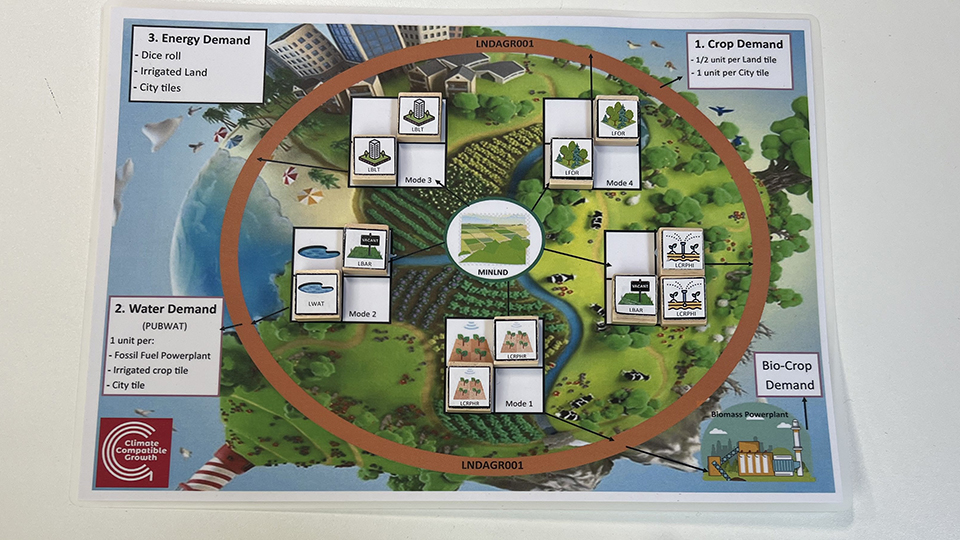27. Reference Energy/CLEWs System
Dr. Leigh Martindale, Prof. Mark Howells, Carla Cannone, Naomi Tan, Rudolf Yeganyan, Dr Abhishek Shivakumar
Models are crucial for helping governments and policymakers plan long-term investments in the context of low carbon transitions. Our research at Climate Compatible Growth (CCG) is centred on building capacity in developing countries with these models to help governments make informed decisions regarding low carbon development pathways, profitable investment in green infrastructure and supporting delivery of the Sustainable Development Goals (SDGs).
One of the most established open-source optimisation models is OSeMOSYS—the Open-Source Energy Modelling System - which has also been adapted to accommodate Climate, Land-use and Water systems (CLEWs modelling). In our cabinet is one example of how we ‘teach’ OSeMOSYS modelling; it’s a workshop designed around constructing a ‘reference CLEWs system’ in the form of a boardgame and entails players correctly assembling the critical and interlinking components of a such a system.
These models are focused on assessing interlinkages between resource systems in order to understand how production and use of food, energy and water security resources may contribute to climate change, and how climate change may affect resource systems. The models also assess where pressure points exist and how to minimise trade-offs. The value of these models has also been recognised and used by the UN due to their ability to quantify and qualify the integration of SDGs.
